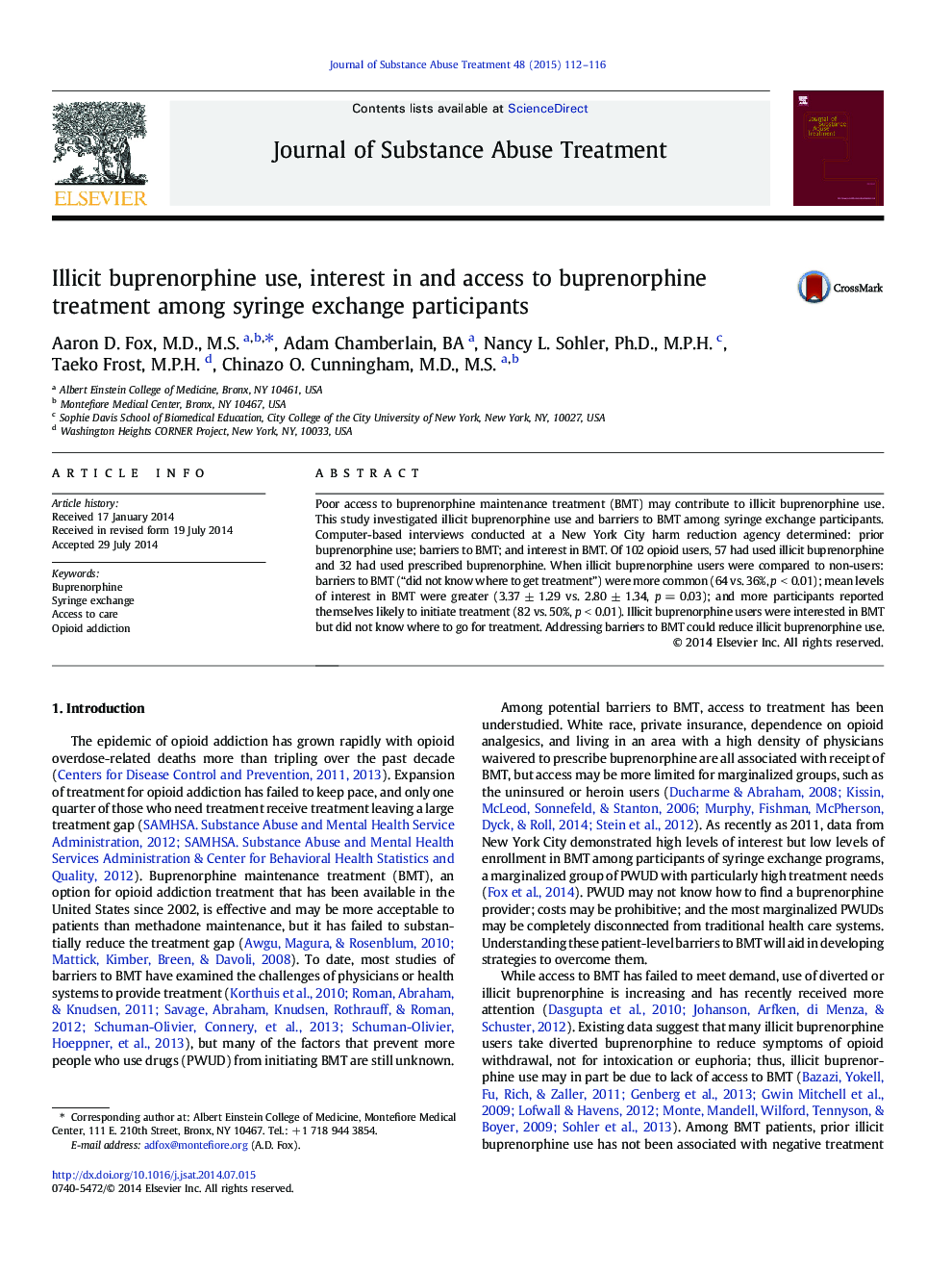| Article ID | Journal | Published Year | Pages | File Type |
|---|---|---|---|---|
| 10303064 | Journal of Substance Abuse Treatment | 2015 | 5 Pages |
Abstract
Poor access to buprenorphine maintenance treatment (BMT) may contribute to illicit buprenorphine use. This study investigated illicit buprenorphine use and barriers to BMT among syringe exchange participants. Computer-based interviews conducted at a New York City harm reduction agency determined: prior buprenorphine use; barriers to BMT; and interest in BMT. Of 102 opioid users, 57 had used illicit buprenorphine and 32 had used prescribed buprenorphine. When illicit buprenorphine users were compared to non-users: barriers to BMT (“did not know where to get treatment”) were more common (64 vs. 36%, p < 0.01); mean levels of interest in BMT were greater (3.37 ± 1.29 vs. 2.80 ± 1.34, p = 0.03); and more participants reported themselves likely to initiate treatment (82 vs. 50%, p < 0.01). Illicit buprenorphine users were interested in BMT but did not know where to go for treatment. Addressing barriers to BMT could reduce illicit buprenorphine use.
Related Topics
Life Sciences
Neuroscience
Biological Psychiatry
Authors
Aaron D. M.D., M.S., Adam BA, Nancy L. Ph.D., M.P.H., Taeko M.P.H., Chinazo O. M.D., M.S.,
